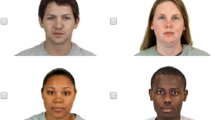Abstract
Human figure drawings were collected from 50 gender dysphoric adults and compared with the drawings of 84 adult evening-school students and college sophomores. The gender dysphoric males drew a person of the opposite sex first more often than the control group males (p< 0.001). The gender dysphoric females drew a person of the opposite sex first more often than the control group females (p< 0.05). Results are discussed in light of existing literature on the DAP and gender identity formation.
Similar content being viewed by others
References
Apfeldorf, M., Randolph, J. J., and Whitman, S. (1966). Figure drawing correlates of furlough utilization in an aged institutionalized population.J. Projec. Tech. 30: 467–470.
Armstrong, R. G., and Hauck, P. A. (1961). Sexual identification and the first drawn figure.J. Consult. Psychol. 25: 51–54.
Finney, J.,et al. (1975). A study of transsexuals seeking gender reassignment.Am. J. Psychiat. 132: 962–964.
Fisk, N. (1975). Gender dysphoria syndrome (The how, what and why of a disease). Proceedings of the second interdisciplinary symposium on gender dysphoria syndrome, Stanford University Medical Center.
Frank, G. H. (1955). A test of the use of a figure drawing test as an indicator of sexual inversion.Psychol. Rep. 1: 137–138.
Gravitz, M. A. (1966). Normal adult differentiation patterns on the figure drawing test.J. Project. Techn. Personal. Assess. 30: 472–473.
Gravitz, M. A. (1969). Direction of psychosexual interest and figure drawing choice.J. Clin. Psychol. 25: 311.
Heinrich, P., and Triebe, J. K. (1972). Sex preferences in children's human figure drawings.J. Personal. Assess. 36: 263–267.
Jung, C. G. (1969).The Archetypes and the Collective Unconscious Princeton University Press, Princeton, N.J.
Machover, K. (1949).Personality Projection in the Drawing of the Human Figure Charles C Thomas, Springfield, Ill.
Mainord, F. R. (1953). A note on the use of figure drawings in the diagnosis of sexual inversion.J. Clin. Psychol. 9: 188–189.
Money, J., and Wang, C. (1966). Human figure drawing. I. Sex of first choice in genderidentity anomalies, Klinefelter's syndrome and precocious puberty.J. Nerv. Ment. Dis. 143: 157–161.
Roback, H. B. (1968). Human figure drawings: Their utility in the clinical armamentarium for personality assessment.Psychol. Bull. 70: 1–19.
Roback, H. B., Langevin, R., and Zajac, Y. (1974). Sex of free choice figure drawings by homosexual and heterosexual subjects.J. Personal. Assess. 38: 154–155.
Skilbeck, W. M., Bates, J. E., and Bentler, P. M. (1975). Human figure drawings of gender-problem and school problem boys.J. Abnorm. Child Psychol. 3: 191–199.
Stoller, R. J. (1968).Sex and Gender Science House, New York.
Swenson, C. (1957). Empirical evaluations of human figure drawings.Psychol. Bull. 11: 432–466.
Swenson, C. (1968). Empirical evaluations of human figure drawings: 1957–1966.Psychol. Bull. 70: 20–44.
Author information
Authors and Affiliations
Rights and permissions
About this article
Cite this article
Fleming, M., Koocher, G. & Nathans, J. Draw-a-person test: Implications for gender identification. Arch Sex Behav 8, 55–61 (1979). https://doi.org/10.1007/BF01541213
Issue Date:
DOI: https://doi.org/10.1007/BF01541213




